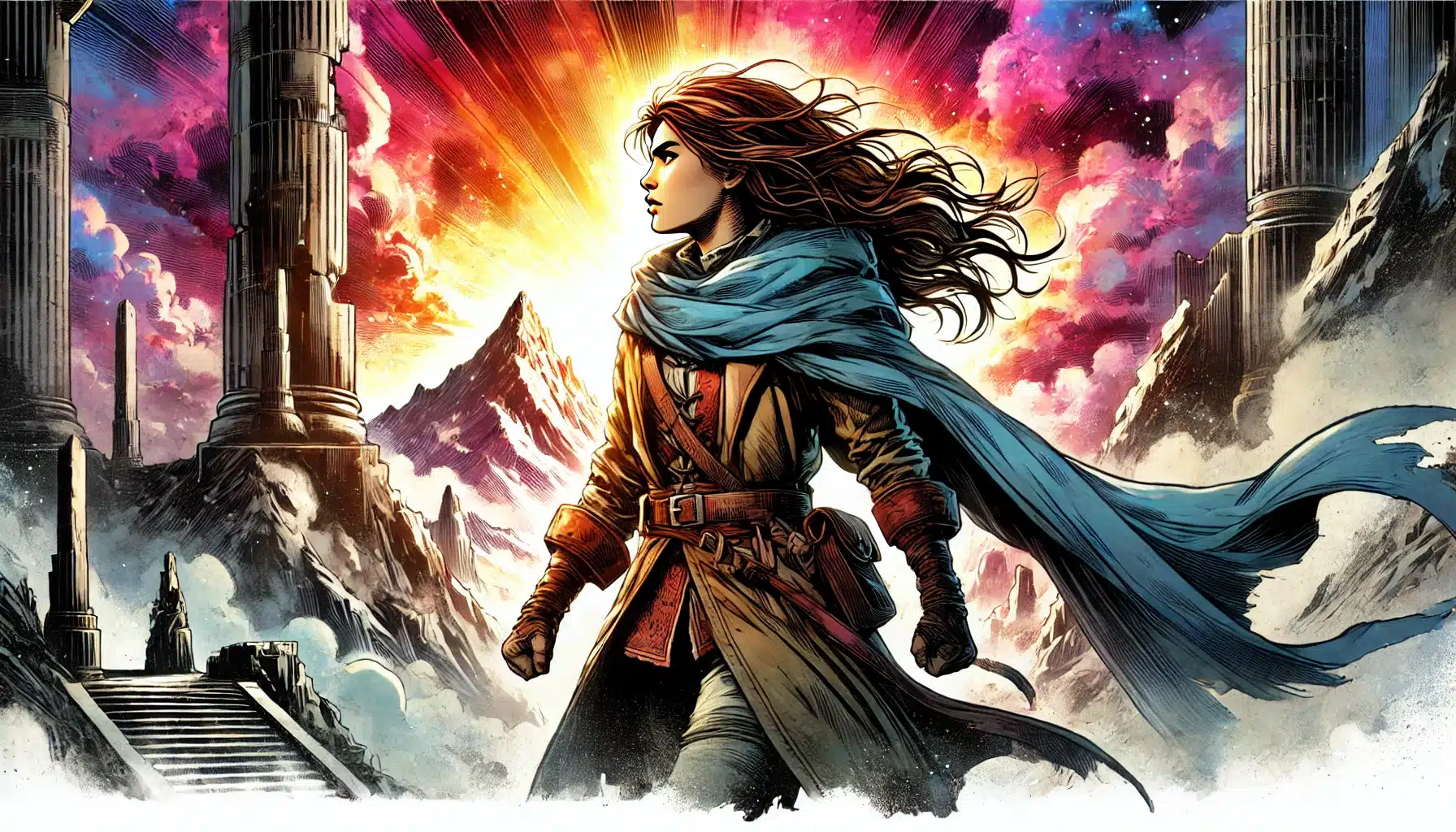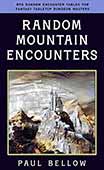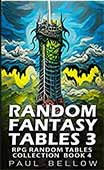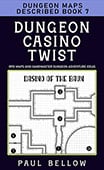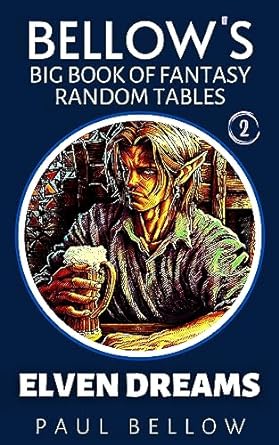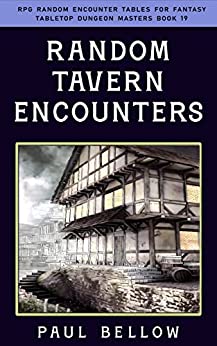Welcome to the vibrant world of tabletop RPGs in 2025, where storytelling continues to thrive and evolve in exciting ways. As we step into this year, Game Masters (GMs) have access to a wealth of tools and resources that were unimaginable just a few years ago. With new trends emerging and player expectations constantly shifting, creating an unforgettable quest has become both an art and a science. Imagine embarking on a journey where fantasy meets cutting-edge technology, shaping the way we play. It’s not just about rolling dice anymore; it’s about crafting experiences that resonate deeply with players. Virtual tabletops, AI-driven NPCs, and immersive soundscapes now allow GMs to transform your D&D game into a truly cinematic experience. Whether integrating dynamic world-building tools or leveraging real-time collaboration, these innovations help create richer, more interactive adventures. The fusion of tradition and technology ensures that every session feels fresh, engaging, and unforgettable.
The year 2025 brings with it a host of innovative tools designed to enhance storytelling. From AI-assisted world-building to virtual reality-enhanced gameplay, Game Masters now have a toolkit that’s more versatile than ever. But here’s the thing: With great tools come great responsibility. GMs must balance these innovations with the core elements of storytelling that have always made RPGs captivating. Understanding this balance is the key to creating quests that players will remember forever.
So, what has the gaming community buzzing in 2025? Well, for starters, there’s a stronger focus on player agency and immersive experiences than ever before. Players want to feel that their choices matter and that the fantasy world reacts dynamically to their decisions. This means GMs need to think beyond linear storytelling and embrace a more fluid, player-driven narrative style. This shift is reshaping how quests are designed, making them more interactive and meaningful.
Gone are the days when a simple fetch quest could satisfy a group of adventurers. Today’s players crave stories that resonate on an emotional level, with plenty of twists and turns to keep things interesting. So, how do GMs rise to this challenge? By thinking creatively and focusing on the elements that make a quest truly memorable: emotional stakes, enriched player experiences, and captivating world interactions.
In essence, we are entering a golden age for RPG storytelling, where the quest is not just a series of tasks but a journey filled with discovery, emotion, and player-specific experiences. As we explore how to make quests unforgettable, let’s delve deeper into the elements that define this new era of storytelling and collaboration.
Understanding What Makes a Quest Memorable
What truly makes a quest memorable? It’s a question that every Game Master (GM) grapples with at some point. In 2025, the answer lies in understanding the core elements that capture players’ hearts and imaginations. At its essence, a memorable quest is a tapestry of emotional stakes, player agency, and dynamic interactions with the world. Emphasizing these components transforms a quest from a simple series of events into a living, breathing experience.
Try my AI Tabletop RPG generators...and an extensive library of content!
First, consider the emotional stakes involved. In a world where players are continually seeking greater immersion, quests that resonate on an emotional level create lasting memories. These emotions can range from the adrenaline rush of a climactic battle to the sorrowful contemplation of a moral dilemma. Whether it’s saving a village from an impending doom or reconciling a fractured friendship, the emotional pull is key to player engagement. This is what leaves a lasting imprint.
Next, player agency is an element that cannot be overlooked. Imagine if players feel as though their choices have no impact on the world; they’d quickly lose interest. A memorable quest is one where players’ actions lead to tangible consequences—be they good or bad. This aspect of player agency fosters investment in the outcome. It offers them a sense of ownership over the quest’s trajectory, which in turn makes every decision more meaningful.
Dynamic world interactions play a pivotal role as well. In 2025, quests are shaped by worlds that aren’t static or predictable. Players living in such realms delight in unearthing secrets, engaging with NPCs who feel like real characters, and confronting changing landscapes that react to their decisions. It’s a world that grows and evolves with the players, making every session feel fresh and immersive.
But here’s the real kicker: no two memorable quests will ever look the same. The beauty of RPGs lies in their infinite variability. Each GM brings their unique flair, shaped by the interests and preferences of their players. The combination of these personalized elements is what ultimately gives birth to a quest that stands out in the players’ minds.
⚔️ Fantasy RPG Random Tables Books
Make life as a Gamemaster easier…
If you play Dungeons & Dragons, Pathfinder, or other fantasy RPGs, this
RPG random tables series
is packed with encounters, NPCs, treasure, and more. Available in eBook or print—either way, you’ll have a wealth of adventure ideas at your fingertips.
By weaving together these core elements—emotional stakes, player agency, and dynamic world interaction—GMs can create quests that don’t just tell a story; they offer an experience. It’s about crafting a narrative that players will carry with them long after the game session has ended. In the end, the goal is to create quests that become a cherished part of the player’s own story.
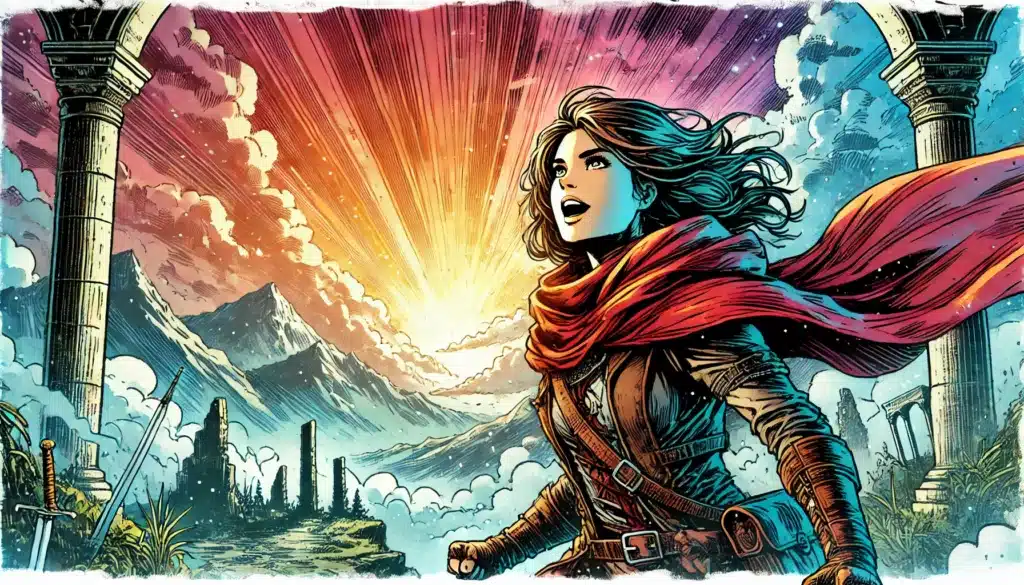
The Power of Player-Driven Storytelling
The quest for making player-driven storytelling the heart of tabletop RPGs is more important than ever in 2025. Imagine a quest tailored uniquely to each player, where personal backgrounds, goals, and their in-game decisions guide the unfolding narrative. Here’s the thing: When players are part of the storytelling process, they naturally become more invested in the outcome, turning every game session into a unique and personal adventure.
Tailoring quests to individual players begins with understanding what motivates them. Whether it’s a thirst for vengeance, a pursuit of lost knowledge, or a heartfelt desire to protect their chosen family, integrating these motivations into the storyline creates unforgettable quests. This player-first approach aligns the narrative with personal stakes, ensuring that every decision feels impactful and resonant.
So, how do you make quests feel personal and player-driven? Here’s a handy list to get you started:
- Incorporate player backstories into the main plot.
- Introduce rival NPCs whose paths cross with the players repeatedly.
- Offer moral dilemmas where there isn’t a clear right or wrong choice.
- Allow players’ decisions to influence the political landscape of the world.
- Employ evolving personal goals as a driving force behind quests.
- Use past player actions to trigger future events.
- Create side quests that revolve around players’ past experiences.
- Weave character-specific themes or motifs throughout the quest.
- Involve players’ family, known allies, or loved ones in the storyline.
- Allow players to form alliances with factions that resonate with their values.
- Develop unique quests for each character class or skillset.
- Use player-learned skills or knowledge to solve intricate problems.
- Integrate players’ fears or weaknesses into the plot.
- Reward players with personalized items or recognition.
- Facilitate opportunities for character development and growth.
By introducing these elements, quests transform from mere adventures into personal sagas. Each step forward is a reflection of the players’ choices and the unfolding narrative becomes a testament to their journey. This level of engagement and personalization is what keeps quests memorable and constantly fresh.
As you harness the power of player-driven storytelling, you’ll find that not only do players develop a deeper connection to the game, but they also contribute creatively to the unfolding story. This collaborative experience enhances the role-playing element and fosters a creative synergy unlike anything else. It’s like painting a collective masterpiece, with each brushstroke adding a new dimension to the story. By placing players at the heart of the narrative, you create quests that feel uniquely theirs, making the experience unforgettable.
Balancing Challenge, Mystery, and Reward
Crafting an engaging quest isn’t just about telling a story; it’s about ensuring that story is filled with balanced challenges, intriguing mysteries, and rewarding outcomes. Striking the right balance between combat, puzzles, and social intrigue is crucial in keeping players immersed and entertained throughout the adventure. You know, it’s about finding just the right mix that hits that sweet spot of challenge and satisfaction.
Firstly, let’s talk about combat. It’s often a central pillar in RPGs, giving players a chance to flex their strategic minds and test their mettle. But here’s the thing: Combat shouldn’t stand alone. Mixing it with clever puzzles or social scenarios deepens the experience. Players love a well-timed brawl, but when combat is just part of a multifaceted challenge, the excitement skyrockets.
Now, weave a layer of mystery into the tale. Everyone loves a good puzzle, but making those puzzles integral to the storyline is what makes them truly rewarding. Perhaps the ancient runes carved on a forgotten temple hold secrets to avert a looming catastrophe. Or maybe deciphering an enemy’s ulterior motives opens new paths to unexpected alliances. These intrigues keep players on the edge of their seats, eagerly piecing together the bigger picture.
Then there’s the social intrigue aspect, where conversations and alliances matter just as much as brute strength or sharp wits. Facilitating vibrant interactions with NPCs or between players allows social combat to shine. Depending on player choices, these interactions can significantly alter the course of the quest, making each player’s voice feel vital.
To keep things organized and help GMs plan, here’s a table visualization:
| Quest Structure | Challenges | Best Engagement Strategies |
|---|---|---|
| Combat-Focused | Enemy Strength, Tactical Skills | Dynamic Environments, Multiple Battle Phases |
| Puzzle-Intensive | Logical Riddles, Pattern Solving | Progressive Complexity, Reward Discovery |
| Social Intrigue | Diplomacy, Deception | Layered Characters, Changing Alliances |
| Exploration-Based | Navigation, World Lore | Hidden Treasures, Mystery Unveiling |
| Mystery-Centric | Clues, Deduction | Non-linear Storytelling, Big Revelations |
| Heist/Stealth | Stealth Skills, Timing | Role Alternation, Successive Planning Steps |
| Rescue Missions | Time Constraints, Strategy | Tension Build-up, Multi-phase Rescue Attempts |
| Resource Management | Resource Limitation, Allocation | Decision-making Pressure, Scarcity Dilemmas |
| Survival Campaigns | Harsh Conditions, Adaptation | Environmental Hazards, Sustenance Search |
| Trade & Commerce | Negotiation, Rival Competition | Economic Shifts, Vulnerable Markets |
| Political Machinations | Influence, Reputation | Faction Loyalties, Consequence Weight |
| Cultural Ceremonies | Cultural Norms, Faith | Ritual Performance, Meaningful Outcomes |
Balancing these elements well means players leave each session with a sense of accomplishment, intrigue, or a desire to explore further. A truly rewarding quest structure ensures players continue to feel inspired, eager for the next chapter in their journey and willing to invest more in both the world and its stories.
At the end of the day, it’s all about discovering what your party loves most and crafting experiences around those preferences. Mix up the structures and keep the surprises coming, because it’s this constant evolution that keeps the magic of RPGs alive and compelling. Combining challenges, mysteries, and rewards in unexpected ways turns every session into an unforgettable adventure that players will cherish long past 2025.
⚔️ Fantasy RPG Random Tables Books
Make life as a Gamemaster easier…
If you play Dungeons & Dragons, Pathfinder, or other fantasy RPGs, this
RPG random tables series
is packed with encounters, NPCs, treasure, and more. Available in eBook or print—either way, you’ll have a wealth of adventure ideas at your fingertips.
Using Dynamic NPCs to Enhance Quest Impact
NPCs, or Non-Player Characters, are the lifeblood of any good RPG quest. By giving them depth and dynamism, you can transform how players interact with the world, making each encounter more meaningful and memorable. In 2025, creating NPCs with rich backstories, shifting motivations, and complex personalities is key to enhancing the narrative impact of any quest.
Imagine an NPC who functions not only as an ally but as a mentor with unknown tragic pasts. Unveiling their stories, bit by bit, keeps players guessing and invested emotionally. Similarly, charismatic antagonists offer players a formidable opponent that challenges both their wit and empathy. Giving villains depth and complexity can elevate a quest, transforming opponents into memorable foes players love to hate.
Dynamic NPCs act as wild cards within quests, adding an element of unpredictability that can shift the storyline in unexpected directions. Picture an informant whose loyalties are suspect—players may have to decide how much they trust this character, leading to intriguing twists. It’s these interactions that inject life into the game, ensuring that players remain on their toes.
Here are some captivating ideas for impactful NPCs:
- Tragic mentors with lessons of loss or redemption.
- Villains seeking vengeance for wrongs of the past.
- Complicated love interests whose loyalties shift.
- Charismatic cult leaders with an unsettling charm.
- Rival adventurers competing for the same objectives.
- Mercenary leaders for hire, with questionable goals.
- Disguised royalty living in secrecy among commoners.
- Tortured inventors creating dubious technologies.
- Lost hermits with ancient secrets and forgotten lore.
- Heirs to long-buried thrones, seeking rightful power.
- Curious children with uncanny connections to magic.
- Mysterious traders peddling rare or dangerous goods.
- Inscrutable oracles giving obscure prophecies.
- Haunted jesters delivering humor tinged with melancholy.
Using NPCs creatively enables GMs to weave a tapestry of connections, betrayal, and redemption that players won’t easily forget. They become a central component of the player’s emotional journey. Armed with these ideas, you can craft each encounter to resonate deeply with the players, layering quests with nuanced stories.
Ultimately, impactful NPCs become a mirror of the player’s own journey within the story. Their development parallels and intertwines with that of the players, offering pathways for growth or adversity. By infusing the game with carefully crafted NPCs, GMs transform their quests into rich, dynamic experiences players will carry with them long after the dice have cooled.

Modern Techniques for Crafting Unforgettable Quests
As 2025 unfolds, new and innovative approaches to quest design open up exciting possibilities for GMs and players alike. Game Masters are discovering fresh ways to craft unforgettable narratives that surprise and engage their parties. It’s like unlocking a treasure chest filled with creative potential, and GMs are diving in with gusto.
One of the most noteworthy modern techniques involves incorporating cutting-edge technology into storytelling. These tools allow GMs to create dynamic quests that go beyond the traditional tabletop experience. Whether through AI-driven content or procedural generation, technological advancements have infused new life into quest design, making every gaming session fresh and exciting.
Try my AI Tabletop RPG generators...and an extensive library of content!
Another key modern technique is the exploration of thematic depth within quests. By drawing on real-world inspirations, from folklore to contemporary issues, GMs can deepen the narrative richness and relevance of their stories. Players find these themes familiar and engaging, sparking conversations and connections both within and outside the game.
In 2025, the evolution of classic quest archetypes ensures they remain fresh and relevant. Even the most traditional structures, like “fetch quests” or “dungeon crawls,” are modernized with creative twists that keep players intrigued. This reinvented storytelling breathes new life into old favorites, ensuring that familiar quests captivate players in unexpected ways.
Together, these modern techniques lift quest crafting to new heights, encouraging GMs to explore fresh ideas and break away from convention. By embracing both creativity and technology, GMs can captivate and satisfy players with quests that resonate long after the campaign has ended. Let’s explore these new techniques further and discover how they enhance the magical world of tabletop gaming.
Leveraging AI and Procedural Storytelling Tools
In the realm of tabletop RPGs, technology is revolutionizing quest creation. Leveraging AI and procedural storytelling tools has opened new doors, allowing Game Masters to craft complex adventures with unparalleled creativity. The year’s 2025, and GMs are diving into an array of digital tools that enhance narrative design like never before.
Imagine this: AI-generated content that fills worlds with vibrant detail, or procedurally generated quests where no two experiences are quite the same. These tools don’t just save time; they foster creativity by providing a foundation on which GMs can build. They also enhance spontaneity within sessions, adding a layer of unpredictability that keeps players enthralled.
So, how do these tools specifically assist in quest creation? Here’s a table that highlights some popular digital tools available to GMs:
| Digital Tool | Features | How It Aids Quest Creation |
|---|---|---|
| AI Dungeon Designer | Auto-generated plots and dialogues | Provides creative seed ideas for story arcs |
| Narrative Engine | Customizable story frameworks | Offers structure while allowing flexibility |
| MapMatic AI Builder | Procedural map and environment generation | Creates immersive worlds with minimal effort |
| StorySmith AI | Dynamic character development tools | Crafts deep, evolving NPCs |
| LoreFactory | World-building AI models | Assists in crafting detailed lore |
| Quest Maker X | Adaptive quest configurations | Adjusts challenges based on player actions |
| Dialog Pro AI | Intelligent dialogue suggestions | Enhances written conversations |
| Incident AI | Random event generator | Introduces spontaneity to sessions |
| NPC Customizer | Adaptive character traits and arcs | Develops intricate NPC personalities |
| Scenario Synthesizer | Scenario permutation tool | Generates diverse plot outcomes |
| PlotAI | Automated plot map creation | Visualizes story progression and development |
| EnviroCraft | Procedural environment and condition sets | Creates atmospheric settings fluidly |
These versatile tools redefine the quest-making landscape. By automating certain elements, GMs can focus on creativity and immersion, crafting experiences that feel handcrafted but offer the scope of genre-defying stories. Whether using AI-powered dialogue to enhance NPC interactions or procedural tools to manipulate worlds in real time, the possibilities are endless.
The introduction of AI and procedural assistance delivers more than convenience; it offers innovation in storytelling. GMs are equipped with the means to breathe life into their worlds, engaging players at new levels. By striking a balance between creative autonomy and technological support, quests designed with these tools stand out as some of the most compelling and unforgettable ever conceived.
The impact of these advancements is immeasurable—from enhancing plot complexity to enriching character depth, AI and procedural tools have opened pathways for nuance and ingenuity in storytelling. The adventures crafted using these modern techniques have clearly captivated and satisfied players, cementing the future of RPGs as vibrant and full of endless possibilities.
Incorporating Real-World Inspirations and Themes
Crafting compelling quests often involves reaching beyond the game table and into the rich tapestry of real-world inspirations. In 2025, GMs are tapping into a treasure trove of history, folklore, and contemporary themes to create quests that feel authentic and culturally resonant. This approach not only deepens the narrative but also immerses players in stories with familiar echoes and meaningful themes.
Drawing from history, for instance, can lend a sense of realism and depth to quests. Imagine a storyline revolving around forgotten legends or mysterious historical events that are tailored into the campaign’s narrative. These threads may align with the political intrigue of a medieval court or the exploration of lost empires. Such stories instantly add gravitas to the world-building, inviting players to explore and learn through their adventures.
Folklore, too, offers a fertile ground for imagination. Whether it’s mythical creatures, tales of heroism and trickery, or local superstitions, these elements can easily be woven into the fabric of an engaging quest. Players delight in discovering how familiar motifs from legend manifest in their adventures, taking the fantasy element of the game to new heights.
Meanwhile, incorporating contemporary issues or themes, such as environmental stewardship, societal paradoxes, or technological advances, can make quests feel relevant and thought-provoking. These themes encourage players to draw parallels to their real lives, adding layers of intrigue and reflection to their gaming experience.
To kick off your creativity, here’s a list of potential real-world sources of inspiration for unique quests:
- Urban legends transposed into fantasy settings.
- Ancient myths reimagined for modern audiences.
- Historical conspiracies that blend fact with fiction.
- Cultural traditions from various societies interpreted through fantasy.
- Literary classics given a fresh twist.
- Nature’s many mysteries woven into quest themes.
- Social justice narratives reflecting in-world dilemmas.
- Futuristic scientific discoveries as fantasy magics.
- Art and architecture influencing setting designs.
- Controversial historical figures adapted into compelling NPCs.
By leveraging these inspirations, GMs create narratives that not only entertain but also challenge players to think critically. This approach elevates the gaming experience, making it more than just a pastime but a gateway into diverse worlds of ideas.
As seen, real-world inspirations enrich the storytelling, fostering quests that leave a lasting mark on players. Integrating historical intrigue, mythological motifs, or relevant societal themes opens a doorway into a broader narrative landscape. In 2025, such meaningful connections breathe life into stories, making them unforgettable not just for their fantasy elements, but also for their rootedness in shared human experience.
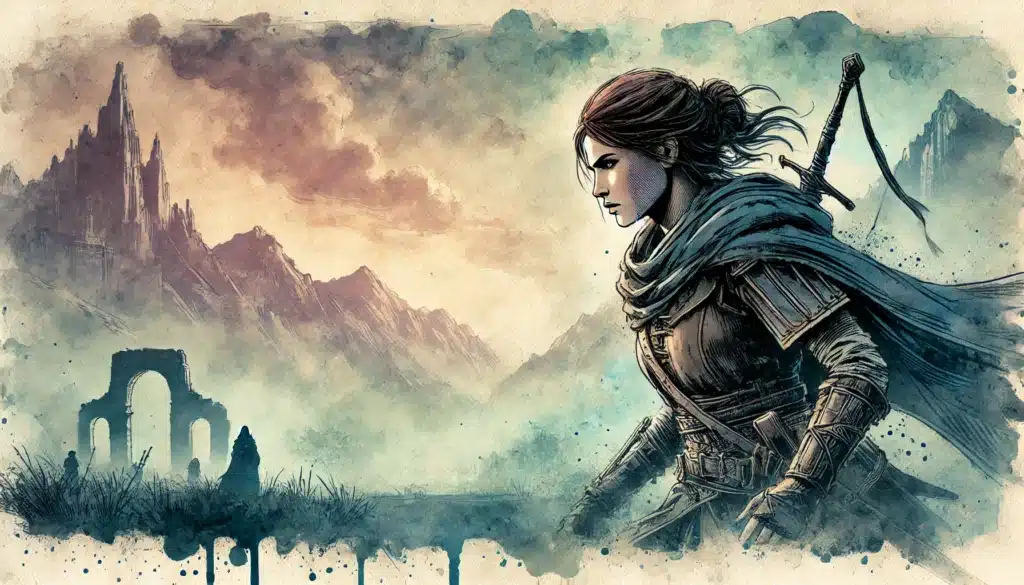
Evolving Classic Quest Archetypes for 2025
In the dynamic world of tabletop gaming, classic quest structures such as “fetch quests” or “dungeon crawls” are staples. Yet, 2025 heralds a creative revolution, breathing fresh life into these structures with inventive twists that modernize and revitalize them. It’s like adding new strings to a well-loved lute, producing melodies both familiar and excitingly new. GMs are finding creative ways to make even the most traditional quest evoke wonder and intrigue.
Updating these archetypes starts with understanding why players love them. Fetch quests and dungeon crawls both offer straightforward objectives: procuring a valuable item or exploring a labyrinthine space. However, introducing layers of complexity, arrays of choices, and unexpected consequences can make them feel contemporary and revitalizing.
⚔️ Fantasy RPG Random Tables Books
Make life as a Gamemaster easier…
If you play Dungeons & Dragons, Pathfinder, or other fantasy RPGs, this
RPG random tables series
is packed with encounters, NPCs, treasure, and more. Available in eBook or print—either way, you’ll have a wealth of adventure ideas at your fingertips.
Consider a classic fetch quest. What if the object is not what it seems? Or what if pursuing it taps into a larger conflict or conspiracy? Perhaps multiple factions vie for the same artifact, each with different motivations and consequences for the players’ choice. Such depth provides fertile ground for exploration and player agency.
Dungeon crawls, too, can evolve by altering the stakes or changing the environment dynamically. A dungeon might shift or morph based upon the players’ choices or unseal new wings with different conditions like gravity or magic rules. Thus, even tried-and-true staples are transformed into innovative arenas ripe with surprises.
Here are some fresh ideas to reinvent traditional quest types:
- Incorporate mini-games into fetch quests reflecting character talents.
- Place moral dilemmas or choices around simple retrieval missions.
- Add timed elements for heightened urgency and excitement.
- Create multiple solutions to dungeon obstacles for player creativity.
- Involve variable environmental conditions in dungeons shifting strategies.
- Weave competing motives among NPCs for layered intrigue.
- Introduce evolving dungeons changing with player actions.
- Create rival adventuring parties with parallel objectives.
- Mix periods of otherworldly surrealism nudging character insights.
- Embed hidden narratives within classic quest arcs for player discovery.
- Design plot twists based on thematic character revelations.
- Engage players with meta-puzzles linked to broader gameplay.
- Use player-built devices or ingenuity as solutions to quest problems.
- Tie fetch quests to broader historical puzzles needing entire party skills.
- Allow players to choose between safeguarding or ending ancient spells.
- Transform dungeons into sentient environments reactive to intentions.
- Merge multiple quest types into seamless epic narratives.
- Play with genre conventions, integrating unexpected twists.
These refreshed ideas mean that familiar quests won’t feel predictable, instead sparking curiosity and engagement. By modernizing archetypes, GMs craft experiences that spark joy and excitement, inviting players to dive deeper into the game’s world and story. In 2025, mixing tradition with innovation ensures RPGs continue to captivate hearts and minds, keeping players enchanted time and time again.
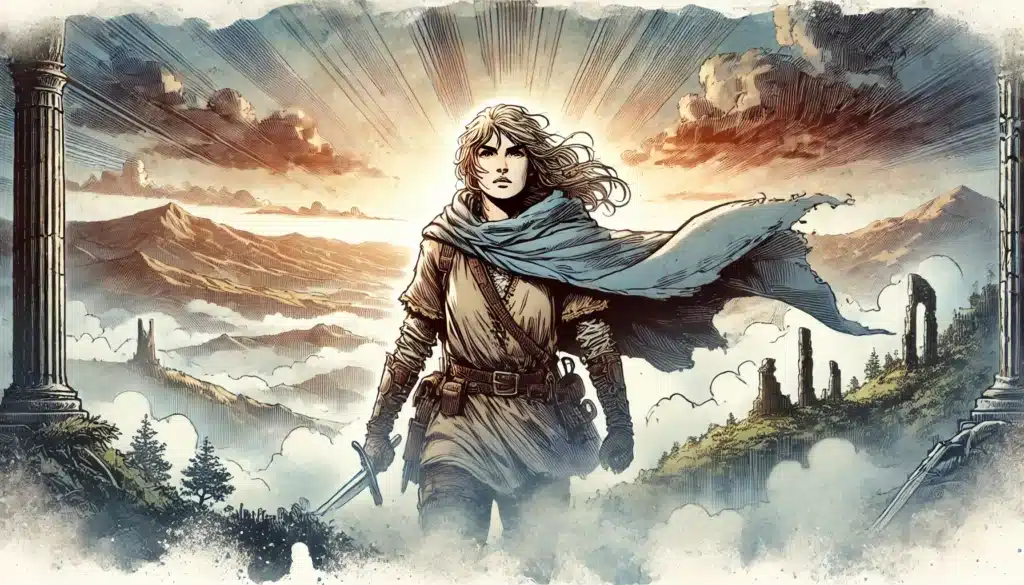
Designing Quests for Different Playstyles
In the ever-evolving universe of tabletop RPGs, designing quests that cater to various player types is both an art and a key to a dynamic campaign. Players have diverse preferences, from the storytelling aficionado immersed in character arcs to the tactician devising cunning battle plans. As 2025 unfolds, understanding and embracing these differences becomes a vital aspect of crafting engaging and inclusive game experiences.
Different playstyles demand different approaches to quest design. Some players revel in elaborate narratives where character development and rich world-building take center stage. For these roleplayers, quests with deep, nuanced stories are essential. Meanwhile, explorers thrive on the thrill of discovery and revelation, requiring adventures with hidden paths, secret locations, and surprising events that keep them engrossed.
Tacticians, on the other hand, savor the strategic elements of gaming. They value structured encounters and combat scenarios, where every move and decision counts. Creating quests with layered challenges and well-thought-out battles is vital to engage their strategic minds and keep them hooked.
Ultimately, designing quests that celebrate these diverse preferences requires flexibility and creativity. By balancing narrative, exploration, and strategy within each quest, GMs can craft experiences that captivate every player at the table, ensuring that everyone shares in the joy of discovery and adventure.
Narrative-Driven vs. Sandbox Quests
In the storytelling landscape of 2025, Game Masters are increasingly crafting quests with specific playstyles in mind—especially when choosing between narrative-driven or sandbox quests. Each approach offers unique advantages and disadvantages, and understanding when to use each style can enhance the gaming experience significantly.
Narrative-driven quests center on a structured, story-focused approach. These quests usually follow a defined storyline, with well-developed characters and clear objectives. They guide players through an arching plot that builds towards a climax, often offering dramatic and emotional experiences. These quests are ideal for players who thrive on deeply immersive stories and intricate character work.
In contrast, sandbox quests prioritize player freedom and exploration. In these open-ended quests, players are given the opportunity to interact with the world at their own pace, often creating their own stories based on the paths they choose. Sandbox quests appeal to players who enjoy crafting personal narratives and exploring the world without restriction, allowing for emergence of unexpected gameplay moments.
To help you consider which approach suits your campaign, here’s a comparison:
| Quest Design | Advantages | Disadvantages |
|---|---|---|
| Narrative-Driven | Immersive storytelling, high emotional impact | Limits player freedom, potential linearity |
| Branching Narrative | Multiple story outcomes, engagement with choices | Complex management, challenging improvisation |
| Sandbox | High player freedom, emergent storytelling | Potential lack of direction, more GM prep work |
Choosing the appropriate quest design style is about understanding your group’s dynamics. Do your players crave a compelling, pre-defined story arc with emotional richness? Or are they the kind of group who loves the autonomy of deciding their own fates, carving stories in a world they navigate as equals with fate itself?
Ultimately, the balance between these quest types will vary; some campaigns thrive under one style, while others find synergy in blending both. Narrative-driven and sandbox quests each offer unique and rewarding experiences, and it’s the GM’s role to judiciously employ these styles to maximize player engagement and enjoyment. By thoughtfully integrating these paradigms, you can craft experiences tailored to your players’ desires, ensuring every session captivates and resonates in memorable ways.
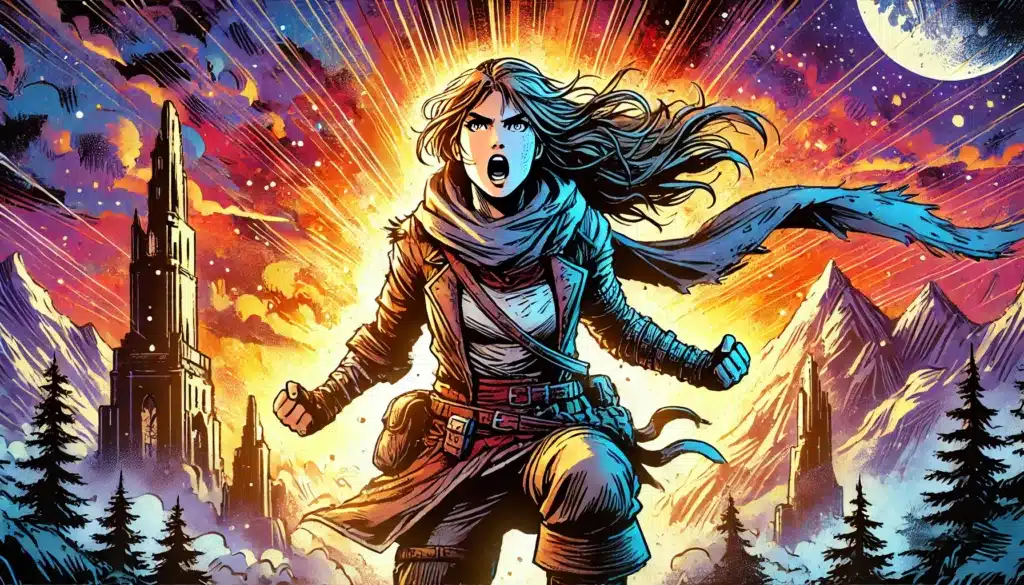
Creating Social, Combat, and Puzzle-Focused Quests
In the vibrant world of tabletop RPGs, quests can cater to a wide range of playstyles, each offering a distinct way to engage players. Whether the focus is on social encounters, combat, or puzzles, each element presents unique opportunities to immerse players in the game. Understanding how to balance and integrate these focal points keeps the gameplay dynamic and captivating.
Social quests center around dialogue, negotiation, and relationship-building. They are perfect for players who revel in interpersonal engagement. Whether it’s navigating a political landscape or brokering peace between warring factions, social quests allow players to delve into the complexities of character interactions and explore moral and ethical dilemmas, offering richness beyond simple conflict resolution.
Try my AI Tabletop RPG generators...and an extensive library of content!
Combat-focused quests prioritize tactical and strategic encounters. These quests shine in highlighting players’ combat prowess and inventive tactics. An ever-twisting labyrinth filled with strategically placed foes can provide endless opportunities for players to exhibit their martial skills, with battles that require both brains and brawn to conquer.
Puzzle-oriented quests challenge the intellectual. They vary widely in their nature, from ancient riddles concealing treasures to intricate mechanical devices needing activation. Puzzle quests encourage players to harness their reasoning abilities, find patterns, and utilize teamwork in solving challenges. They can be the linchpin of a quest or serve as layers adding depth to the overall storyline.
To inspire your next game session, here is a comprehensive list of quest ideas catering to different playstyles:
- Political negotiations requiring consensus and gravitas.
- Prestigious balls masking shadowy intrigue or espionage.
- Arena tournaments with grand stakes and expected surprises.
- Investigations of city-wide heists with clever subterfuge.
- Intricate debates influencing community or council decisions.
- Multi-round combat encounters with unpredictable modifiers.
- Fortress sieges demanding shrewd planning and coordination.
- Wildlife rescues entailing environmental survival elements.
- Magical duels where spell variety impacts as much as strategy.
- Cultural exchanges with ritual challenges needing precision.
- Persuasive undertakings altering geopolitical alliances.
- Mysterious labyrinths teeming with challenging puzzles.
- Artifact hunts with rivalries adding complex interplay.
- Exploring immortality’s price through philosophical debates.
- Constructing a defense against nature’s wrath with reasoning.
- Navigating deceptive illusions concealing deeper truths.
- Ill-fated love reconciliations involving forbidden paths.
- Theatrical performances with intrigue beneath the surface.
- Series of timed rescue operations requiring tactical acumen.
- Shadows of the past haunting quests through intricate lore.
- Decoding cryptic messages essential to the world’s future.
Blending these quest types ensures players have a well-rounded experience catering to their preferred playstyles. By choosing the right mix of social, combat, and puzzle elements, you create engaging sessions that challenge players on multiple fronts. It’s all about enhancing the story and expanding the imaginative boundaries within the campaign.
By striking this balance, you not only accommodate diverse player interests but also create a dynamic and enriched gameplay environment. This synergy keeps the adventure fresh, ensuring that each session remains as thrilling as it is enjoyable, in the grand tapestry of your campaign.
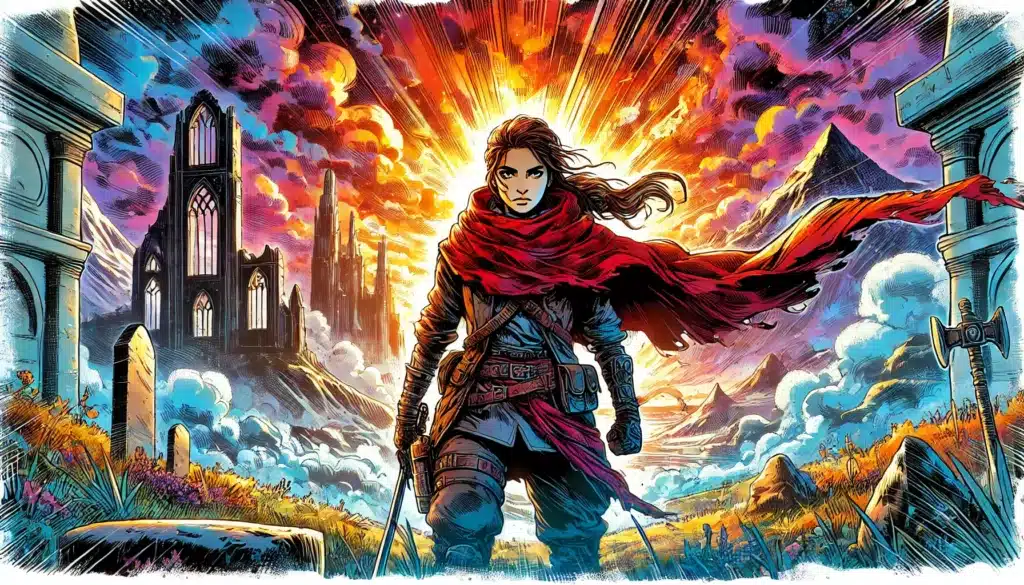
Crafting High-Stakes Endgame Quests
The culmination of a long-running RPG campaign often hinges on a high-stakes endgame quest, designed to provide thrilling closure and showcase the players’ journey up to that point. These climatic adventures need to be packed with excitement, delivering on the promises of the narrative while offering meaningful choices that impact the game world’s future. Designing such quests is an art, one that requires thoughtful crafting and an understanding of narrative pacing, player expectations, and emotional resonance.
High-stakes endgame quests often pit players against some of the most formidable challenges they’ve faced. Whether it’s a multi-phase battle against a world-ending foe or a critical decision that alters the course of history, these quests need to feel epic. It’s like taking every element that has defined the campaign and turning it up to eleven—creating moments that are both exhilarating and emotionally satisfying.
A vital component of these quests is the players’ involvement in shaping the narrative’s conclusion. By giving players agency in pivotal moments—whether through strategic decisions, moral choices, or alliances—they become architects of their own destinies. This empowers them, creating a resonant conclusion they feel invested in.
⚔️ Fantasy RPG Random Tables Books
Make life as a Gamemaster easier…
If you play Dungeons & Dragons, Pathfinder, or other fantasy RPGs, this
RPG random tables series
is packed with encounters, NPCs, treasure, and more. Available in eBook or print—either way, you’ll have a wealth of adventure ideas at your fingertips.
To inspire your own climactic adventures, here’s a collection of unforgettable final quest ideas:
- A desperate battle against a cosmic entity threatening reality.
- Tragic decisions at the heart of a world-shattering event.
- Liberation of an oppressed nation through strategic warfare.
- Final confrontations with long-time rivals or nemeses.
- Unveiling ancient powers or secrets holding cataclysmic keys.
- Magical realms colliding, causing dimensional chaos.
- A last-stand defense against overwhelming invasion forces.
- Enigmatic time loops requiring repetition to avert doom.
- Totalitarian regime overthrows needing collective subterfuge.
- Crossroad choices impacting the fundamental laws governing existence.
- Fates intertwined with otherworldly alliances of cosmic stakes.
- Assembling mythical relics unleashing unimaginable forces.
- Empathetic resolutions mending ancient vendettas.
- Diversions of multiversal alignments concluding in spectacular unity.
- Adventurers burdened with responsibility shaping new paradigms.
- Desperate rescues from harrowing predicaments, threading timelines.
- Rebirth cycles threatening consumption of perpetual eternity.
- Decisions entwined with the heart of societal transformation.
Designing these quests requires the GM to weave a narrative that considers not only the culmination of plot elements but also the players’ journey—the hardships they endured, the choices they made, and the growth they experienced. By bringing these elements together, the endgame quest provides a fitting tribute to the campaign, celebrating the players’ agency and accomplishments.
In crafting high-stakes and high-emotion endings, GMs ensure that the adventure ends on a memorable note, leaving players with stories they’ll reminisce about for years to come. It’s about creating a final chapter that encapsulates the spirit of the campaign, maximizing excitement and impact all the way through to the very end.
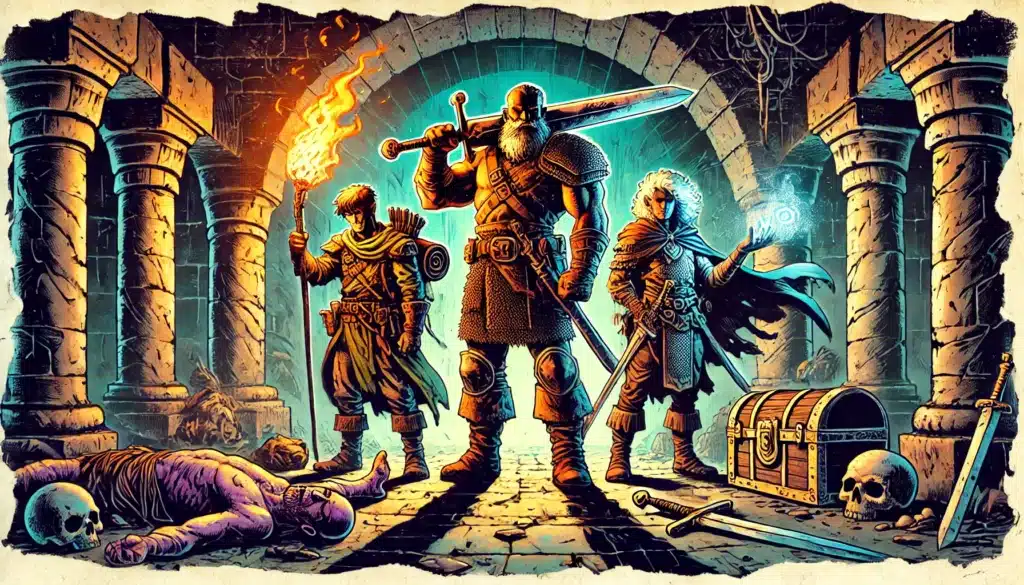
Final Thoughts on Quest Creation in 2025
As we close the tome on quest creation for 2025, it’s clear that the evolution of storytelling has brought forth new methodologies and perspectives, enhancing the RPG experience for both Game Masters and players. The fusion of creativity with technological advancements has opened boundless possibilities, allowing quests to be more dynamic, interactive, and personal. In a world filled with cutting-edge tools and a focus on inclusive and engaging narratives, the modern GM has a wealth of resources to draw upon.
The journey of quest creation is ever evolving, driven by a passion for storytelling and an understanding of player desires. Whether integrating player agency, drawing from real-world inspirations, or leveraging AI, crafting memorable adventures requires embracing both innovation and the timeless elements that have long enchanted players. As a GM, remaining open to new ideas and methods leads to exciting revelations and richer stories.
One cannot overlook the power of collaboration with players. Engaging them in world-building and decision-making nurtures an environment where shared narratives flourish. Allowing players to shape their destinies and the world they inhabit creates an experience that resonates on a deeply personal level, making the journey unforgettable.
As we look ahead, the realm of quest design continues to promise vast opportunities for innovation and discovery. Whether modernizing classic archetypes or designing sprawling sandbox worlds, the magic of tabletop RPGs is alive and thriving. It’s a testament to the creativity and imagination of the community that each game session becomes a canvas for exploration and connection.
So here’s to a future brimming with adventures yet to be told. As you embark on your quest creation journey in 2025 and beyond, embrace the full spectrum of tools, techniques, and inspirations at your disposal. With the spirit of creativity and the fervor of collaborative storytelling, you can craft quests that are not only cherished by players but also form part of a legacy that transcends the confines of the table and lives on in the hearts and minds of adventurers everywhere.

